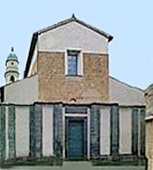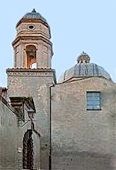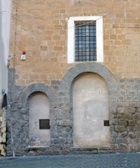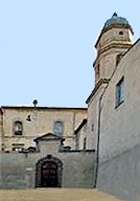




The Jesuits, who arrived in Orvieto in 1621 and were initially established in Palazzo Sforza Monaldeschi della Cervara, moved to this site in 1625. The parishes of SS Apostoli and San Lorenzo de’ Arari were united at this point, the parish priest at San Lorenzo had responsibility for the cure of souls throughout the new parish. They rebuilt the church in 1662.

The Jesuits left Orvieto in 1687 but returned in 1770. They were expelled following the suppression of their order in 1773. The Seminario Vescovile passed into direct episcopal control in 1778, but the church was abandoned. It was rebuilt when Bishop Giovanni Battista Lambruschini recalled the Jesuits in 1819. He then consecrated the church and was buried here when he died in 1825. The striking campanile was built in 1834, but the facade of the church remains incomplete. The Jesuits were finally expelled in 1860.
The church became unstable and was closed in 1965. It was finally restored in 1991-5, and its Baroque gilded wooden altars were restored in 1995-6. Unfortunately, it is usually closed.
Interior
The interior retains its original floor plan, but now has a pseudo-transept with an octagonal lantern at its centre that supports an elliptical dome.
Immaculate Virgin with SS Philip and James
This altarpiece on the high altar is by Vincenzo Pasqualoni.
Triumph of angels (1735)
This altarpiece on the 1st altar. An inscription in a plaque held by the angels, which was discovered when the altarpiece was restored in 1995-6, gave the date of the work and identified the artist as Ludovico Mazzanti. It was thus painted during his stay in Naples in 1733-40.

